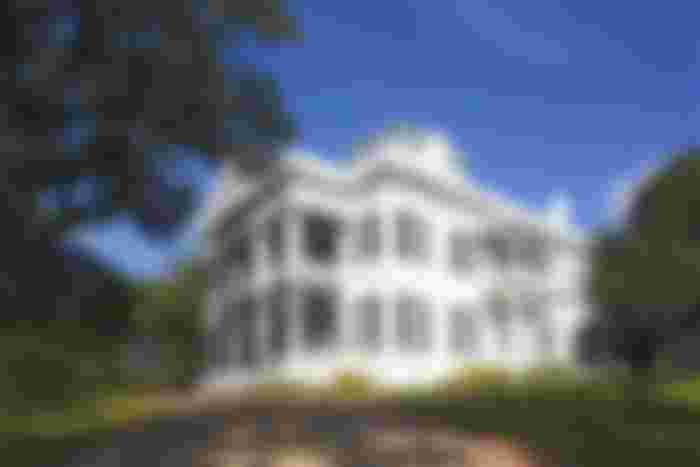· Even if your home is new, its architecture derives inspiration from the past.
· Here's an introduction to home styles found throughout the United States.
· Find out what influenced important housing methods in the United States from colonial to modern times.
· Learn how residential architecture has changed over the centuries, and discover interesting facts about the design effects that helped shape your own home.
· American Colonial House Style

· When North America was colonized by Europeans, settlers brought construction traditions from many different countries.
· American colonial house styles from the 17th century to the American Revolution include a wide range of architectural genres, including New England colonial, German colonies, Dutch colonies, Spanish colonies, and French colonies.
· Neoclassical after the revolution, 1780-1860.

· During the founding of the United States, people like Thomas Jefferson felt that Greece and ancient Rome expressed the principles of democracy.
· After the American Revolution, the classical architecture of the system, symmetry and neoclassical reflected a new state.
· Both government and federal government buildings across the country have adopted this type of architecture.
· Ironically, many of the democratic-inspired Greek revival palaces were built as agricultural houses before the civil war (pre-war).
· American patriots soon became unwilling to use British architectural terms such as Georgians or Adam to describe their structures.
· Instead, they imitated the English styles of the day but they called the Federalist Style, a form of modern classicism.
· This structure can be found throughout the United States at different times in American history.
· Victorian era.

· The reign of British Queen Victoria from 1837 until 1901 gave a name to one of the most prosperous times in American history.
· The factory's large and component construction pieces, which are made through a system of railways, have made it possible to build large, sophisticated and affordable homes throughout North America.
· A variety of Victorian styles have emerged including Italian, Second Empire, Gothic, Queen Anne, Romantic, and many more.
· Each Victorian style had its own distinctive features.
. The Wright Effect.

· American architect Frank Lloyd Wright (1867-1959) revolutionized the house American when he started designing low-line houses and open interiors.
· Its buildings provided Japanese serenity to a country largely inhabited by Europeans, and his ideas on organic architecture are being studied to this day.
· From 1900 to 1955, Wright's designs and writings influenced American architecture, bringing modernity that became real American. The designs of The Brera School of Wright inspired America's love affair with Ranch Style House, a simpler and smaller version of the low horizontal structure with a prevailing chimney.
· Wright's writings on architecture and organic design are noted by the environmentally sensitive designer.
. Indian Bengali Influences.

. Named after the primitive straw huts used in India, the non-independent architecture suggests comfort - a rejection of the richness of the Victorian era.
. However, not all American bungalows were small, and bungalows were often decorated with many different styles, including arts and crafts, Spanish neighborhoods, and colonial colony.
. American bungalow styles, prominent in the first quarter of the twentieth century between 1905 and 1930, can be found throughout the United States. Among the plaster layers to the cut, Stellings remains one of the most famous and famous types of homes in America.
. Early 20th century "Revivals" .

. In the early 20th century, American builders began to reject elaborate Victorian styles.
. The new century houses became compressed, economic, and informal when the American middle class began to grow. This 1940 Tudor cottage was built by a New York real estate developer in the Jamaica Estates section of Queens, a neighborhood of New York City.
. These neighborhoods are designed to be classy and rich in part by the choice of architecture - British designs such as Theodore Cottage were thought to evoke an appearance of civility, elitism and aristocracy, as were the neoclassical that evoked a sense of democracy a century ago. .
. Not all neighborhoods were similar, but often similar forms of the same architectural style served as a required attraction. For this reason, throughout the United States one can find neighborhoods built between 1905 and 1940 with dominant themes - arts and crafts (craftsmanship), bungalow styles, Spanish mission houses, character patterns of American superhero stories, and colonial colonial houses were common.
. Mid-20th Century Boom.

. During the Great Depression, the construction industry suffered from the stock market collapse in 1929 until the Pearl Harbor bombing in 1941, and those Americans who could afford to buy new homes moved toward increasingly simple methods. After the wars ended in 1945, GI soldiers returned to the United States to build families and suburbs.
. With the return of soldiers from World War II, real estate developers sought to meet the growing demand for cheap housing. Mid-century houses from 1930 to 1970 included the traditional affordable style, the farm, and the beloved Cape Cod.
. These designs have become the mainstay of expanding suburbs in developments such as Levittown (in Both New York and Pennsylvania).
. Houses of "Neo", 1965 to the present.

. Earlier in the nation's history, the founding fathers introduced neoclassical engineering to a new democracy.
. Less than 200 years later, the American middle class flourished as new consumers of housing and hamburgers. McDonald's super-sized pies, the Americans went in large quantities with their new homes in traditional styles - New Colonial, New Victorian, New-Mediterranean, Neo-Selective, and oversized houses became known as MacMansions.
. Many new homes built during periods of growth and prosperity borrow details of historical styles and combine them with modern features. When Americans can build anything they want to do.







